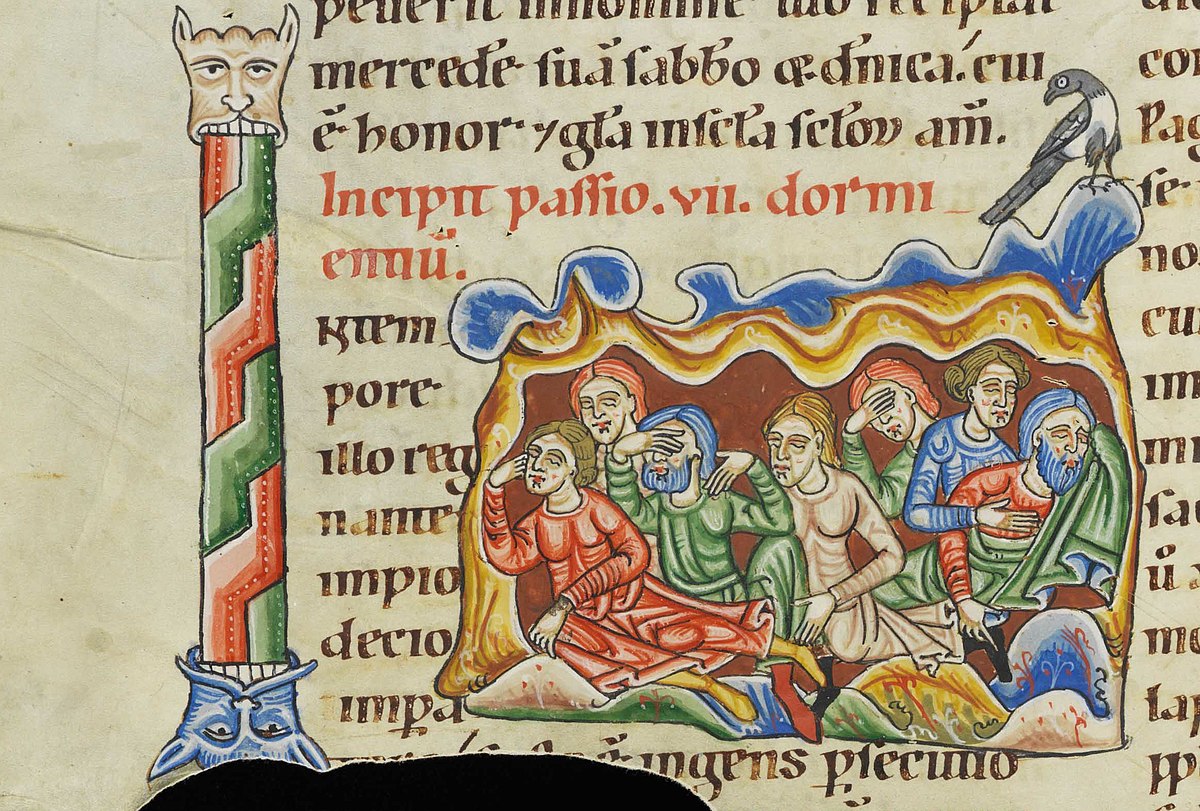Seven Sleepers Day
 |
| The Seven Sleepers |
I had never heard of this holiday before, and as I read about the day, several sources made a statement that rather startled me. Seven Sleepers Day does not take its name, "as is commonly thought" from the edible dormouse, but rather from the legend of the Seven Sleepers.
At this point, my mind didn't quite know where to turn. Several parts of my brain were vying for attention. One part -- the more sedate, logical part, I'd like to think -- was eager to find out about the legend of the Seven Sleepers. Another part was wondering just who these people were -- the ones who "commonly thought" that the name of the day was derived from the edible dormouse. A third section seemed to be screaming, "Edible dormouse? Edible dormouse?!!"
The Edible Dormouse
 |
| Glis glis: delicious with honey and poppy seeds. |
As for the edible part, the ancient Romans liked to eat them, and even raised them especially for that purpose. They had special terra cotta containers that they kept them in, called gliraria, sort of like an early version of the hamster cage. Edible dormice could be eaten either as an appetizer, or as a dessert, dipped in honey and poppy seeds.
 |
| Lionel Rothschild let the dormice escape. |
In Germany, the edible dormouse is known as Siebenschläfer, which means something like "seven sleeper" probably because it hibernates for seven months of the year. The day we're celebrating today is called Siebenschläfertag, Seven Sleepers Day, for reasons altogether unrelated to the dormouse. We'll get to that story next.
The Seven Sleepers of Ephesus
The Seven Sleepers of Ephesus were a group of Christian youths who lived neared Ephesus somewhere around the year 250 AD. The Roman Emperor Decius was trying to eliminate Christianity from his domain at the time, and the young men were given their choice of recanting their beliefs, or of being executed. They went to a cave to pray and fell asleep. |
| The Seven Sleepers in the cave. |
Various versions of the story have the men sleeping for anywhere from 150 to 250 years. There is also a version in which they were sealed into the cave by the Emperor, and only awoke when a farmer unsealed the cave to use as a pen for his cattle.
The story appears to have originated in Ephesus, and then to have spread outwards. Many pilgrims made the pilgrimage to Ephesus. A church was built over a collection of graves in the area. During the Crusades some bones from the area were brought to Marseilles, and found a home at the church of Saint Victoire.
And Back to the Weather...
 |
| St. Swithun gets the credit in England. |
Das wetter am Siebenschläfertag
Sieben wochen bleiben mag.
["The weather on Seven Sleepers Day, seven weeks will remain."]
and
Wie's wetter am Siebenschlafertag,
So der Juli werden mag.
["As the weather is on Seven Sleepers Day, so will it be in July."]
As you'll note, the saying actually rhymes in German.
The closest thing to Seven Sleepers Day that we have in the English language is probably Saint Swithun's Day, the 15th of July. We are told:
St. Swithun's Day if thou dost rain
For forty days it will remain.
St. Swithun's Day if thou be fair
For forty days 'twill rain nae mare.
As a prediction of weather, neither holiday is noticeably accurate.
No comments:
Post a Comment